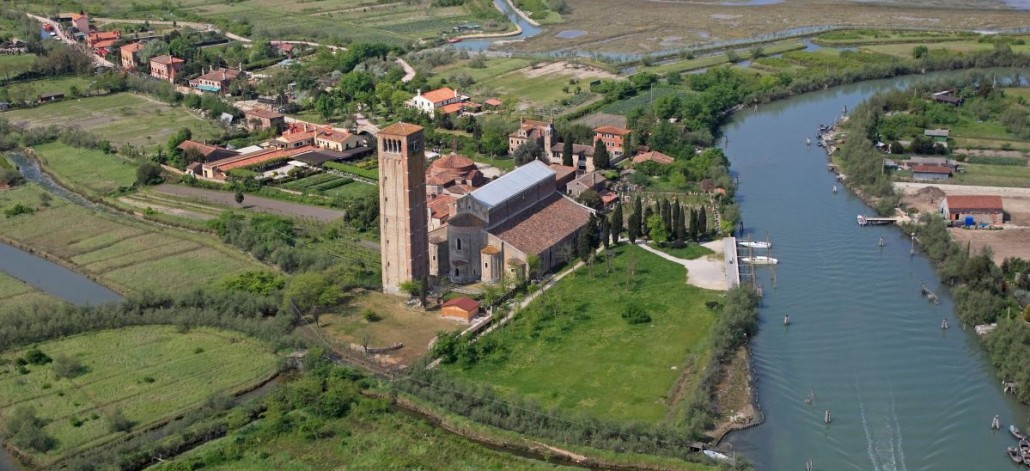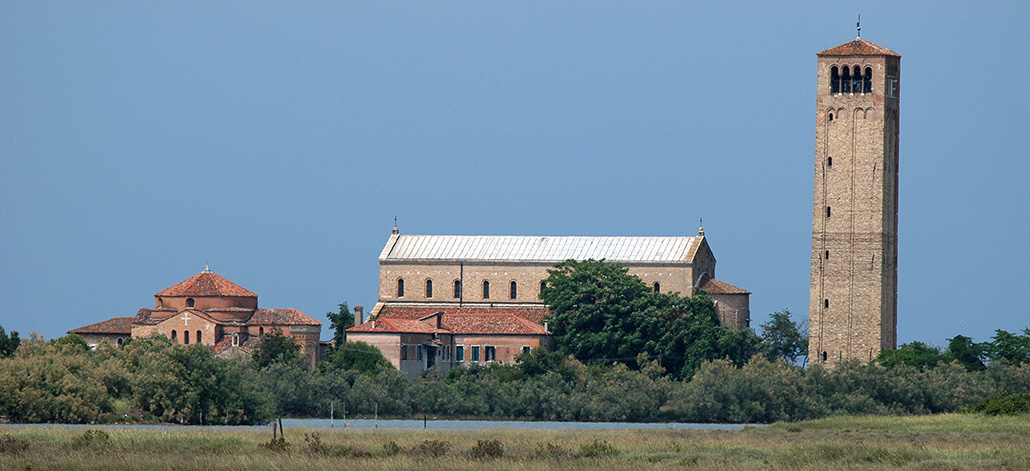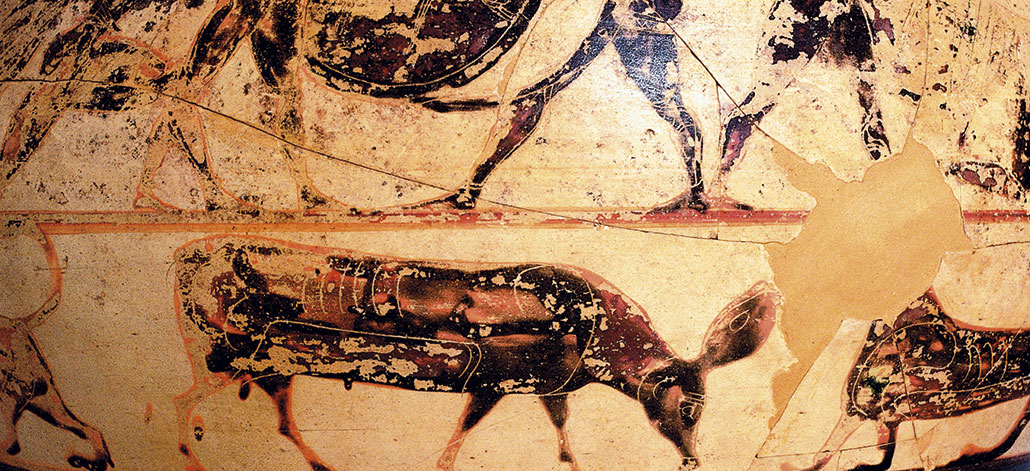



the island

the history of the island
Although there are not enough reliable documents to reconstruct the history of the lagoon, archeological research would suggest that Torcello was inhabited in the Roman era and part of the territory with Altino as the capital.
From the 2nd century BC, an organized road and inland waterway network radiate from Altino and across the lagoon allowing communication between Ravenna and Altino.
Shipping arrived through the inlet in the outer shore and from here travelled along navigable river to inland city. The islands in the lagoon must have supplied way stations, and therefore would have been populated although probably by hunters, fisherman and salt collectors.
There may have also been suburban villas on the island, as is suggested by some verses of the Latin Poet Martial.

the settlements
Modern Archeological excavations on Torcello (starting with the Polish Mission in 1961-62) have shown a stratigraphic sequence from the 2nd century to the formation of the first early medieval settlement and confirmed habitation form the 5th to the 6th centuries
When the mainland population retreated to the islands, they were therefore neither unknown nor desert.
Temporary migrations towards the island took place at various stages due to threats from Alaric the Visigoth (401 and 408) Attila the Hun (452) and then Theodoric’s Ostrogoths (489).
In 568 -569 it was the Lombards turn to invade Italy, causing movement of population from the mainland to the lagoon, but unlike before, it was no longer possible to return.
The Lombard Kingdom pushed the Byzantine into the Lagoon, which acquired importance as a strategic location in the new byzantine territories
The civil and the ecclesiastical authorities of the patriarchy of Grado and Aquileia, the Bishops of Altino and Torcello, Oderzo and Heraclius and Caorle all established themselves on the islands.
In 639 when Oderzo (the capital of the Byzantine province of Venetia et Histria) fell to the Lombards, and the imperial government moved to Hercliea Cittanova, the cathedral of Saint Mary Genitrix was built on Torcello
This Church illustrate the Byzantine movement towards the sea and the central importance of Torcello (around which numerous other places in the lagoon like Burano, Mazzorbo, San Giacomo in Paludo, and Murano gravitated ) in early Venetian history.
In 740 – 742 the capital of the Dogeship moved definitively away from the mainland form Heraclius to Malamocco, and finally in 810-811 having avoided being absorbed into the Carolingian Kingdom, the seat power moved to Rialto, which would be the heart of Venice of Saint Mark.
Between the 8th and the 9th centuries the dioceses in the lagoon organized themselves with Torcello being one of the biggest.
It was therefore the northern lagoon (Torcello, Lio Piccolo, San Lorenzo in Ammiana e San Francesco del Deserto) the population expanded before it did in Rialto, and Torcello was the center of economy of the area.

the connection with Venice
From the 9th century, Venice was born and the seat of power moved to Rialto. From this time, and especially in the two centuries thereafter the Venetian navy suppressed piracy in the upper Adriatic. Venice gained political influence on the Dalmatian coast and its role as a hub of commerce and meeting point between the Byzantine empire the west and the Islam grew
The island’s role changed with the ascent of Rialto, which took over the commercial function of Torcello’s “mega emporion” it became a center of religious life, the capital of a large diocese with a prestigious cathedral which was restored and splendidly refurbished with the support of the doge in 1008.
Having become only a municipal authority, Torcello’s decline had begun, and this was exacerbated by population decline caused by the plague and environment problems
Fishing and ship building, the main activities of Torcello, began to face ever greater difficulties, and the economy gradually became one of subsistence. There were no economy resource for the sea defenses to prevent loss of farmland, and there was a lack of labor for its cultivation. The abandoned building were dismantled and sold for new construction in Venice
The Bishops of Torcello stopped living on the island preferring to stay in their own houses in Venice until they relocated to a Palazzo in murano in the 17th century
In 1818 the diocese was suppressed and Santa Maria Assunta Cathedral and all of the bishopric was absorbed into the venetian patriarchate









